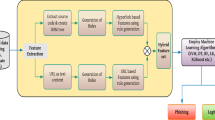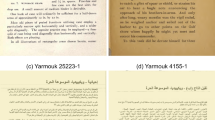Abstract
Imperialist Competitive Algorithm (ICA), which is a mathematical model and the computer simulation of human social evolution, works as a successful algorithm in many optimization problems. In this paper a new binary version of imperialist competitive algorithm, namely BICA is proposed using a well appropriated transfer function and optimal parameter setting. These allow the algorithm to explore a larger number of possible solutions and avoid the stagnation. To assess the performance of the proposed method the 0–1 knapsack problem, the feature selection problem and the Content-Based Image Retrieval (CBIR) systems are experienced; and the effectiveness of this method is compared with the state-of-the-art algorithms. Comparative results confirm the performance of the proposed BICA in all three applications.











Similar content being viewed by others
References
Holland JH (1975) Adaptation in natural and artificial systems, MIT Press, Cambridge
Kennedy J, Eberhart RC (1995) Particle swarm optimization. In: Proceedings of IEEE international conference on neural networks, Piscataway, pp 1942–1948
Kennedy J, Eberhart RC (1997) A discrete binary version of the particle swarm algorithm. IEEE Int Conf Comput Cybern Simul 5:4104–4108
Nezamabadi-pour H, Rostami-shahrbabaki M, Farsangi MM (2008) Binary particle swarm optimization: challenges and new solutions. J Comput Soc Iran (CSI) Comput Sci Eng (JCSE) 6(1-A):21–32
Afshinmanesh F, Marandi A, Rahimi-Kian A (2005) A novel binary particle swarm optimization method using artificial immune system. EUROCON 2005, Serbia
Pampara G, Franken N, Engelbrecht AP (2005) Combining particle swarm optimisation with angle modulation to solve binary problems. IEEE Congr Evol Comput 1:89–96
Mirjalili S, Mohd Hashim SZ, Taherzadeh G, Mirjalili SZ, Salehi S (2011) A study of different transfer functions for binary version of particle swarm optimization. In: Proceedings of international conference on genetic and evolutionary methods
Lee S, Soak S, Oh S, Pedrycs W, Jeon M (2008) Modified binary particle swarm optimization. Prog Nat Sci 18:161–166
Wang XZ, He YL, Dong LC, Zhao HY (2011) Particle swarm optimization for determining fuzzy measures from data. Inf Sci 181(19):4230–4252
Dorigo M, Maniezzo V, Coloni A (1991) Positive feedback as a search strategy. Technical report. Dipartimento di Elettronica e Informatica, Politecnico di Milano, Milano
Bu T, Yu S, Guan H (2004) Binary-coding-based ant colony optimization and its convergence. J Comput Sci Technol 19(4):472–478
Kong M, Tian P (2005) A binary ant colony optimization for the unconstrained function optimization problem. In: Proceeding of CIS 2005, Part I, LNAI 3801, pp 682–687
Kong M, Tian P (2006) Introducing a binary ant colony optimization. In: Proceeding of ANTS 2006, LNCS 4150, pp 444–451
Fernandes CM, Rosa AC, Ramos V (2007) Binary ant algorithm. In: Proceeding of GECCO’07, London
Mavrovouniotis M, Yang Sh (2015) Applying Ant colony optimization to dynamic binary-encoded problems. In: Mora A, Squillero G (eds) Applications of evolutionary computation. EvoApplications 2015. Lecture notes in Computer Science, vol 9028. Springer, Cham, pp 845–856
Kashef Sh, Nezamabadi-pour H (2015) An advanced ACO algorithm for feature subset selection. Neurocomputing 147:271–279
Storn R, Price KV (1995) Differential evolution—a simple and efficient adaptive scheme for global optimization over continuous spaces. In: Technology report. Berkeley, TR-95-012
Deng C, Zhao B, Yang Y, Deng A (2010) Novel binary differential evolution without scale factor. In: Proceeding of the third International workshop on advanced computer intelligence, pp 250–253
Solos LP, Tassopoulos LX, Beligiannis GN (2016) Optimizing shift scheduling for tank trucks using an effective stochastic variable neighbourhood approach. Int J Artif Intell 14(1):1–26
Rashedi E, Nezamabadi-pour H, Saryazdi S (2009) GSA: a gravitational search algorithm. J Inf Sci 179(13):2232–2248
Rashedi E, Nezamabadi-pour H, Saryazdi S (2010) BGSA: binary gravitational search algorithm. J Nat Comput 9:727–745
Rashedi E, Nezamabadi-pour H (2014) Feature subset selection using improved binary gravitational search algorithm. J Intell Fuzzy Syst 26:1211–1221
Precup RE, David RC, Petriu EM, Preitl S, Paul AS (2011) Gravitational search algorithm-based tuning of fuzzy control systems with a reduced parametric sensitivity. In: Gaspar-Cunha A, Takahashi R, Schaefer G, Costa L (eds) Soft computing in industrial applications. Springer, Berlin. Adv Intell Soft Comput 96:141–150
Atashpaz-Gargari E, Lucas C (2007) Imperialist competitive algorithm: an algorithm for optimization inspired by imperialistic competition. IEEE Congress on Evolutionary Computation, pp 4661–4667
Rajabioun R, Atashpaz-Gargari E, Lucas C (2008) Colonial competitive algorithm as a tool for Nash equilibrium point achievement. Comput Sci Appl ICCSA, pp 680–695
Moghimi Hadji M, Vahidi B (2012) A solution to the unit commitment problem using imperialistic competition algorithm. Power Syst IEEE Trans 27(1):117–124
Khabbazi A, Atashpaz-Gargari E, Lucas C (2009) Imperialist competitive algorithm for minimum bit error rate beamforming. Int J Bio-Inspired Comput 1(1/2):125–133
Nozarian Sh, Soltanpoor H, Vafaei Jahan M (2012) A binary model on the basis of imperialist competitive algorithm in order to solve the problem of knapsack 1-0. In: IPCSIT, vol 34, pp 130–135
Mohammadi-ivatloo B, Rabiee A, Soroudi A, Ehsan M (2012) Imperialist competitive algorithm for solving no n-convex dynamic economic power dispatch. Energy 44:228–240
Zenga X, Li, Y, Qina Y (2009) A dynamic chain-like agent genetic algorithm for global numerical optimization and feature selection. Neurocomputing 72(4–6):1214–1228
Avishek P, Maitib J (2010) Development of a hybrid methodology for dimensionality reduction in Mahalanobis-Taguchi system using Mahalanobis distance and binary particle swarm optimization. Expert Syst Appl 37(2):1286–1293
Zhang G (2011) Quantum-inspired evolutionary algorithms: a survey and empirical study. (2011) Heuristics 17:303–351
Jeong YW, Park JB, Jang SH, Lee KY (2010) A new quantum-inspired binary PSO: application to unit commitment problems for power systems. IEEE Trans Power Syst 25(3):1486–1495
Nezamabadi-pour H (2015) A quantum-inspired gravitational search algorithm for binary encoded optimization problems. Eng Appl Artif Intell 40:62–75
Liu H, Yu L (2005) Toward integrating feature selection algorithms for classification and clustering. IEEE Trans Knowl Data Eng 17(4):491–502
Guyon I, Elisseeff A (2003) An introduction to variable and feature selection. Mach Learn Res 3:1157–1182
Dash M, Liu H (1997) Feature selection for classification. Intell Data Anal 1:131–156
Raymer ML, Punch WF, Goodman ED, Kuhn LA, Jain AK (2000) Dimensionality reduction using genetic algorithms. IEEE Trans Evol Comput 4:164–171
Tanaka K, Kurita T, Kawabe T (2007) Selection of import vectors via binary particle swarm optimization and cross-validation for kernel logistic regression. In: Proceedings of international joint conference on networks, Orlando, pp 12–17
Chuang LY, Yang CH, Li JC (2011) Chaotic maps based on binary particle swarm optimization for feature selection. Appl Soft Comput 11:239–248
Wang X, Yang J, Teng X, Xia W, Jensen R (2007) Feature selection based on rough sets and particle swarm optimization. Pattern Recognit Lett 28(4):459–471
Chuang LY, Tsai SW, Yang CH (2011) Improved binary particle swarm optimization using catfish effect for feature selection. Expert Syst Appl 38:12699–12707
Al-Ani A (2005) Feature subset selection using ant colony optimization. Int J Comput Intell 2(1):53–58
Zhang CK, Hu H (2005) Feature selection using the hybrid of ant colony optimization and mutual information for the forecaster. In: Proceeding of the 4th international conference on machine learning and cybernetics, pp 1728–1732
Chen B, Chen L, Chen Y (2013) Efficient ant colony optimization for image feature selection. Signal Process 93:1566–1576
Lichman M (2013) UCI machine learning repository. http://archive.ics.uci.edu/ml. University of California, School of Information and Computer Science, Irvine, CA
Ng WWY, Feng S, Yeung DS, Chan PPK (2015) Sensitivity based image filtering for multi-hashing in large scale image retrieval problems. Int J Mach Learn Cybern 6(5):777–794
Chang SF, Sikora T, Puri A (2001) Overview of the MPEG-7 standard. IEEE Trans Circuits Syst Video Technol 11(6):688–695
Rashedi E, Nezamabadi-pour H (2012) Improving the precision of CBIR systems by feature selection using binary gravitational search algorithm. In: Proceedings of the 16th CSI international symposium on artificial intelligence and signal, pp 39–42
Wang JZ, Li J, Wiederhold G (2001) SIMPLIcity: semantic sensitive integrated matching for picture libraries. IEEE Trans Pattern Anal Mach Intell 23(9):947–963
Author information
Authors and Affiliations
Corresponding author
Rights and permissions
About this article
Cite this article
Mirhosseini, M., Nezamabadi-pour, H. BICA: a binary imperialist competitive algorithm and its application in CBIR systems. Int. J. Mach. Learn. & Cyber. 9, 2043–2057 (2018). https://doi.org/10.1007/s13042-017-0686-4
Received:
Accepted:
Published:
Issue Date:
DOI: https://doi.org/10.1007/s13042-017-0686-4




